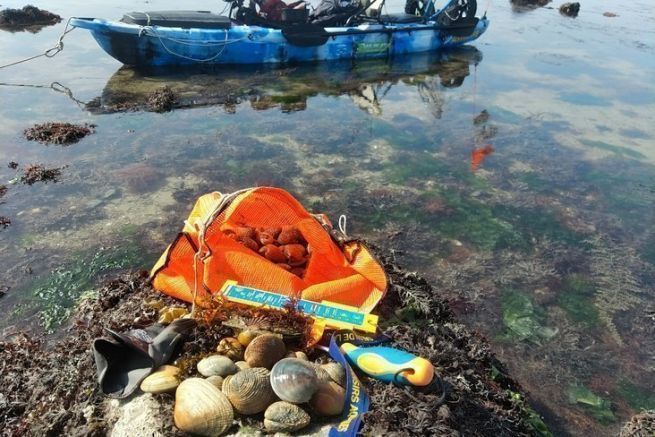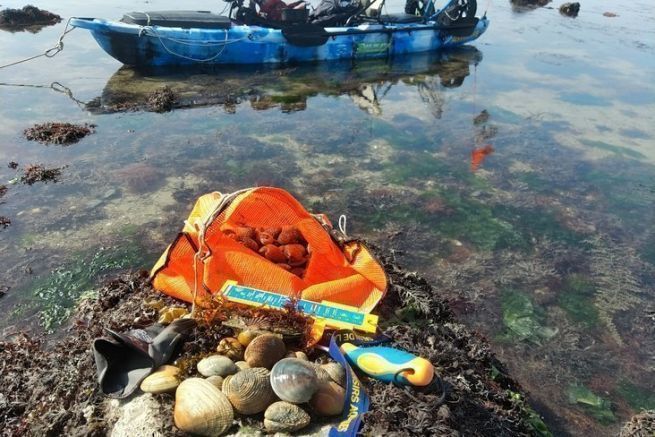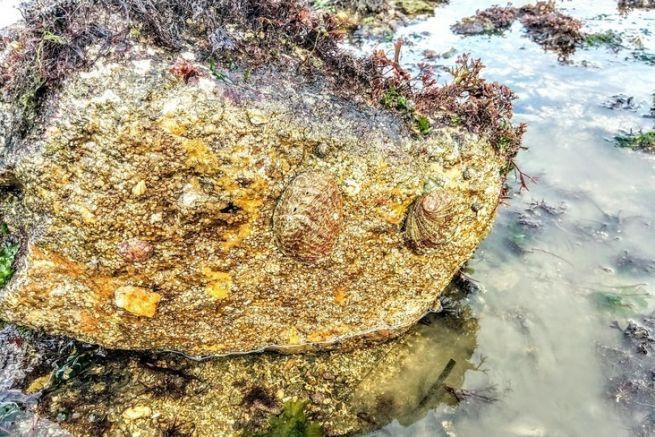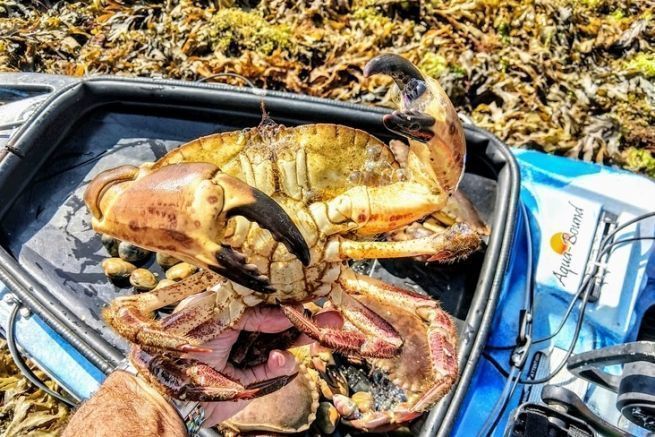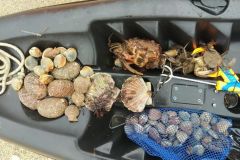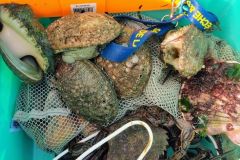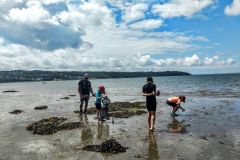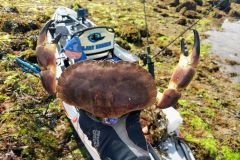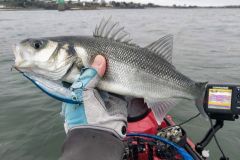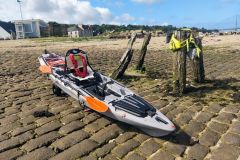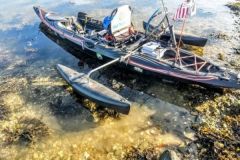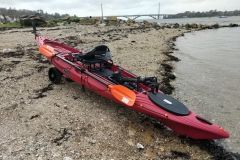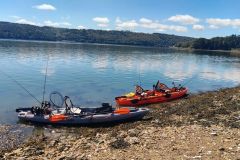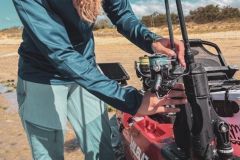Untapped spots

Let's take an interest in burrowing shellfish, i.e. clams and clams. Far from the overexploited beaches, kayaking will be the most efficient way to take you to unexploited spots. Inaccessible spots from the coast, guaranteeing good fishing. First of all, you will have to look for spots that are discovered at low tide, without any link with the coast.
The study of nautical charts or a reconnaissance by kayak, at low tide of the area, will allow you to save time. Once you have found the spot, the kayak will drop you off and allow you to move quickly to other spots. Move from one islet to another, this will allow you to avoid raking over a single area.
Few materials
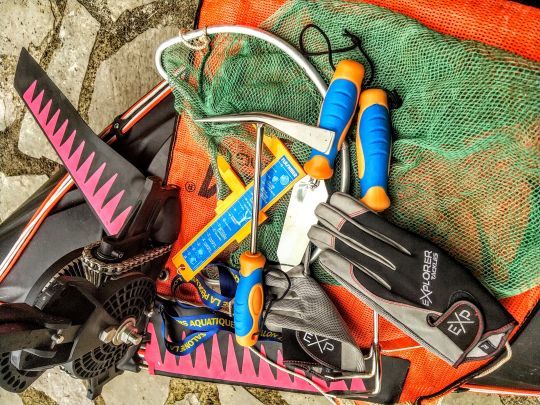
As far as equipment is concerned, you don't need much, a claw and a bag, the regulation says claw with 4 teeth maximum, with a length of 10 cm maximum for the teeth of the claw. A tide gauge to control the size of the catch, it is often written on it.
This may vary from one department to another, consult the regulations of your department. For example, in Finistère, it is 4 cm for clams and 4.3 cm for clams and prairies. In general, the quantity not to be exceeded is 100 shellfish or 3 kilos, which is sufficient for a family seafood platter.
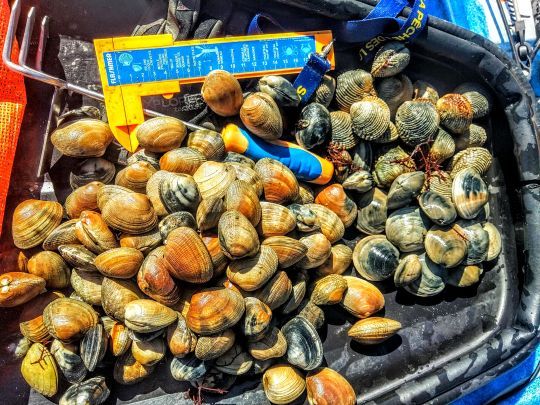
Also consult the decrees issued by the prefectures on sanitary monitoring of fishing areas. Some shellfish may be prohibited from harvesting at different times of the year. You can find these texts at the town hall or on the net.
Clams and prawns
These shellfish like to live on coarse sandy substrates, a little muddy for the clams. Very often, in Finistère, these 3 shellfish cohabit at the same time. They are buried at a depth of about 5 to 15 cm. The clams are often just under the surface.
Locate the holes left by the siphons and scratch. The closer the tide and the tipping time, the more shells come to the surface. There is no need to turn over the entire spot on a large surface.

How to cook your harvested product?
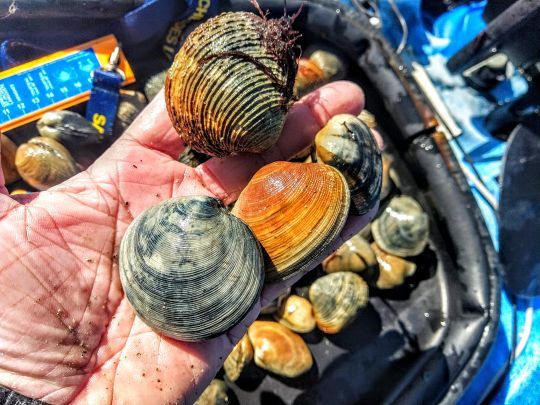
Before eating these shellfish, it is best to let them drain in salt water for a few hours. Clams are excellent raw, with a little shallot vinegar and a slice of salted butter. Clams are delicious cooked in the oven with a snail butter.
Respect the mesh size and quotas, it is the guarantee of success of your future fishing.
